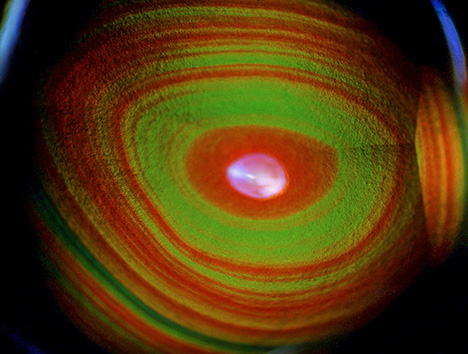“Dragon’s Eye” Fire Agate

Found in only a few places in the southwestern United States and Mexico, fire agate is a very finely layered golden brown to reddish brown agate with a botryoidal multi-layered structure. Each of the individual layers in a fire agate is dusted with the iron hydroxide mineral goethite, which provides the brown bodycolor.
What makes fire agate particularly special is that the ultra-thin coatings of goethite cause a very colorful iridescence, primarily in red, golden orange, and green, but occasionally in violet to blue. The vibrant colors result from interference between light rays that are reflected and refracted while traveling through the gem and reflecting from these ultra-thin layers.
The finest-quality fire agates can rival Australian black opal. Because they are a form of chalcedony quartz, fire agates are also more durable than opal, making them suitable for virtually any jewelry application.
The 4.62 ct (10.22 × 9.16 × 7.19 mm) Mexican fire agate studied here, a polished high-dome cabochon, is from the El Terrero mine in the Calvillo Mountains of Aguascalientes State, Mexico. Under close examination, its somewhat ovoid botryoidal structure and fine granular texture, together with the banded red, orange, and green coloration, project the image of a reptilian “dragon’s eye.” As an added bonus, the hotspot created by the fiber-optic light at the apex of the gem adds an elegant finishing touch to the overall image.



